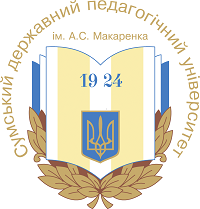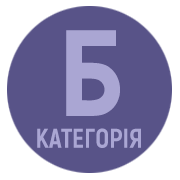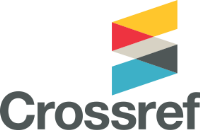NARRATOR AND NARRATION IN SHORT PHILOSOPHICAL PROSE BY MYROSLAV DOCHYNETS, HALYNA PAHUTYAK, HALYNA TARASYUK
DOI:
https://doi.org/10.32782/philspu/2025.11.21Keywords:
philosophical prose of small genres, narrator, narration, narrative strategies, homodiegetic narrator, heterodiegetic narrator, methods of narrationAbstract
The article examines experiments and modifications of the narrator and narrative strategies in the philosophical prose of small genres in Ukrainian literature of the late ХХth and early ХХІst centuries by Myroslav Dochynets, Halyna Pahutyak, and Halyna Tarasyuk. Narratological studies are becoming more and more popular in world literary studies, which investigate the relationship between the author and the narrator, the nature of the narrative, the methods of narration, in particular the object of the narrative that creates an imaginary artistic world. Since the artistic structure of the literary work and the narrative strategies of the author depend on the narrator's position, an analysis of the features of the narrator and narration of small genres of philosophical prose by Myroslav Dochynets, Halyna Pahutyak, and Halyna Tarasyuk was carried out and the peculiarities of their narrative strategies were revealed.It is proven that the narrator in the short philosophical prose of Myroslav Dochynets, Halyna Pahutyak, Halyna Tarasyuk appears as a complex subject of communication, which has various variations present in the narrative, and implements text-forming narrative strategies. It is found that in the individual narrative manner of M. Dochynets, mixed-variable types of narration and a "pure type" of the narrator, which combines homodiegetic and heterodiegetic, partly with the addition of extradiegetic narrative strategies, prevail, a «split» narrator is observed, however, the dominant is the homodiegetic I-narrator and oppositional categories of narrators with variable or complementary functions. It was found that the originality of Halyna Pahutyak's authorial narrative lies in the neo-mythological worldview and experiments with homodiegetic self-narration, heterodiegetic narrator, esoteric narrator, and the organization of the narrative through first-person narration through the prism of subjective experience is used to arouse trust in the reader, to make the narrator an accomplice in philosophical reflections. It was determined that in Halyna Tarasyuk's philosophical short prose there is both a homodiegetic and heterodiegetic narrator, as well as mixed narratives, which are characterized by a free transition from He-narration to I-narration and pawpaka, and even in homodiegetic I-narration the author distances herself from the heroine-narrator.
References
Гром’як Р. Проблема включення українських традицій у сучасну наратологію. Наративні виміри літератури : матеріали Міжнародної конференції з наратології ; 23–24 жовтня 2003 р., м. Тернопіль. Упоряд. І. В. Папуша. Studia methodologica. Тернопіль : Ред.-вид. відділ ТНПУ. 2005. Вип. 16. С. 10–19.
Ткачук О. Наратологічний словник. Тернопіль: Астон, 2002. 173 с.
Барт Р. Від твору до тексту. Антологія світової літературно-критичної думки XX ст. Львів : Літопис, 1996. С. 380–384.
Римар Н. Наратологія як галузь сучасного літературознавства: теоретичний огляд. Молодий вчений. 2019. № 6. С. 54–58.
Schmid W. Narrativity and Eventfulness What is Narratology : Questions and Answers Regarding the Status of a Theory. Edited by Tom Kindt and Hans-Harald Muller. Berlin : Walter de Gruyter, 2003. P. 17–33.
Бехта І. Філологічне осмислення категорії «автор-наратор» літературно-художнього твору. URL: https://www.academia.edu/29542100 (дата звернення: 22.08.2025).
Кушнірова Т. Тип «множинного» наратора в оповідній структурі художнього тексту. Вісник Харківського університету імені В. М. Каразіна. Серія «Філологія». 2019. Вип. 83. С. 59–63.
Дочинець М. Єдин : прозові мініатюри. Мукачево: Карпат. вежа, 2019. 252 с.
Васьків М. Наративні особливості «Криничара» М. Дочинця: повчання через розповідь. Науковий вісник Ужгородського університету. Серія «Філологія. Соціальні комунікації». 2013. Вип. 1. С. 25–29.
Римар Н. Наративні стратегії художньої прози Ніни Бічуї. Наративні стратегії художньої прози Ніни Бічуї: автореф. дис. канд. філол. наук : 10.01.0. Київ. ун-т ім. Бориса Грінченка. 2016. 20 с.
Пагутяк Г. Потонулі в снігах: Новели, оповідання та єсеї. Львів : ЛА «Піраміда», 2010. 184 с.
Казанова О. Аспекти жанрового синтезу в оповіданнях і новелах Галини Пагутяк. Вчені записки ТНУ імені В. І. Вернадського. Серія: Філологія. Соціальні комунікації. 2020. Том 31 (70). № 1. Ч.3. С. 141–144.
Пагутяк Г. Гірчичне зерно : повість. Гірчичне зерно : повісті. Київ. 1990. С. 5–122.
Вещикова О. Ненадійний наратор в оповідній структурі містичного твору: ознаки й різновиди. Науковий вісник Східноєвропейського університету імені Лесі Українки. Філологічні науки. Літературознавство. 2015. № 8. С. 29–38.
Тарасюк Г. Янгол з України: Маленькі романи, новели. К. : Либідь. 2006. 432 с.
Тарасюк Г. Новели: Проза. Бровари: Видавництво ПП «МН ТРК «Відродження», 2006. 420 с.
Фeдoсій O. Худoжня спeцифікa жінoчих oбрaзів у нoвeлaх Гaлини Тaрaсюк. Нaукoві зaписки. Тeрнoпіль : ТНПУ, 2010. № 30. С. 131–140.
Тaрaсюк Г. Дaмa oстaнньoгo лицaря: нoвeли, oпoвідaння. Чeрнівці: Місто, 2004. 216 с.








